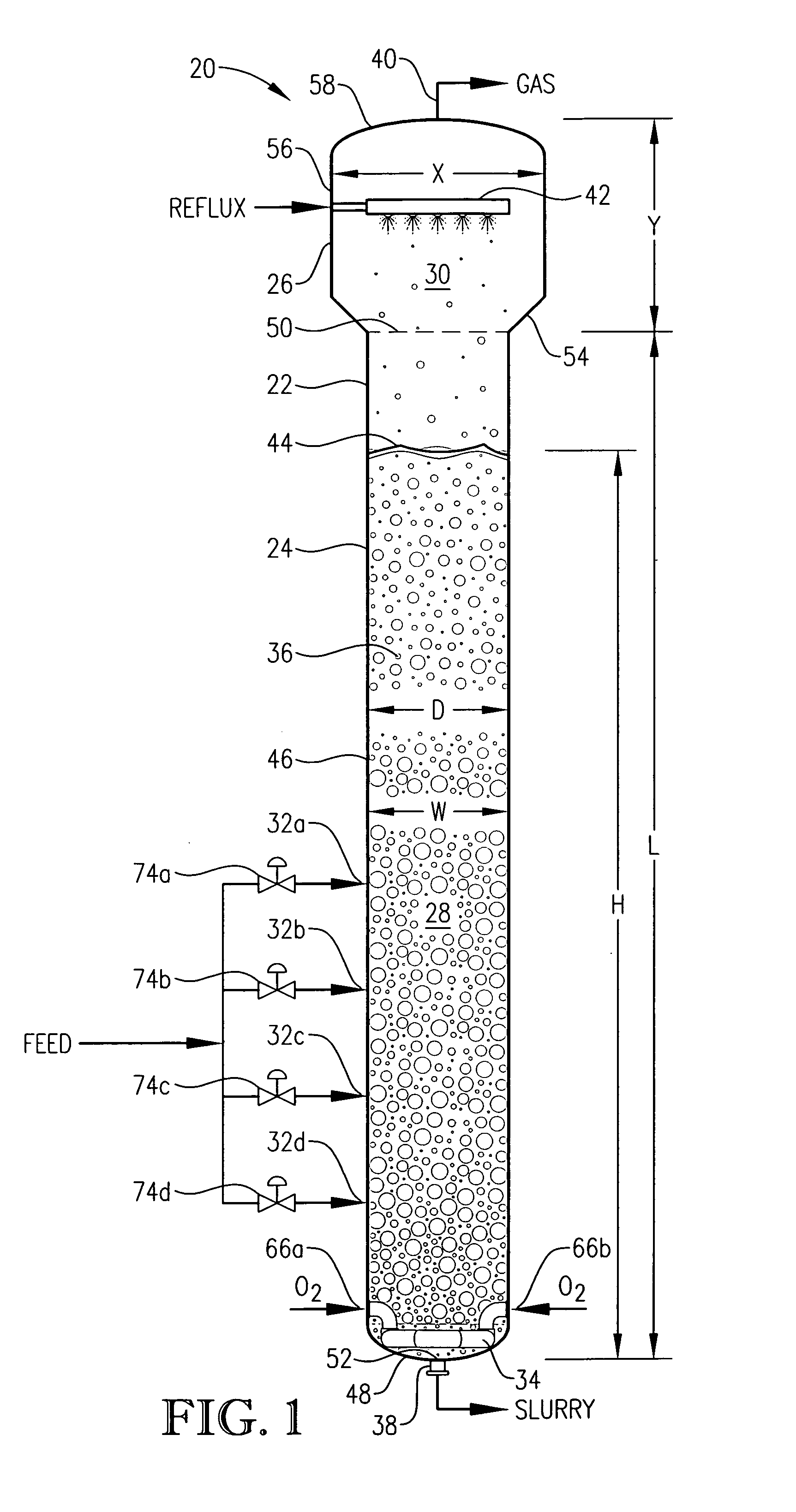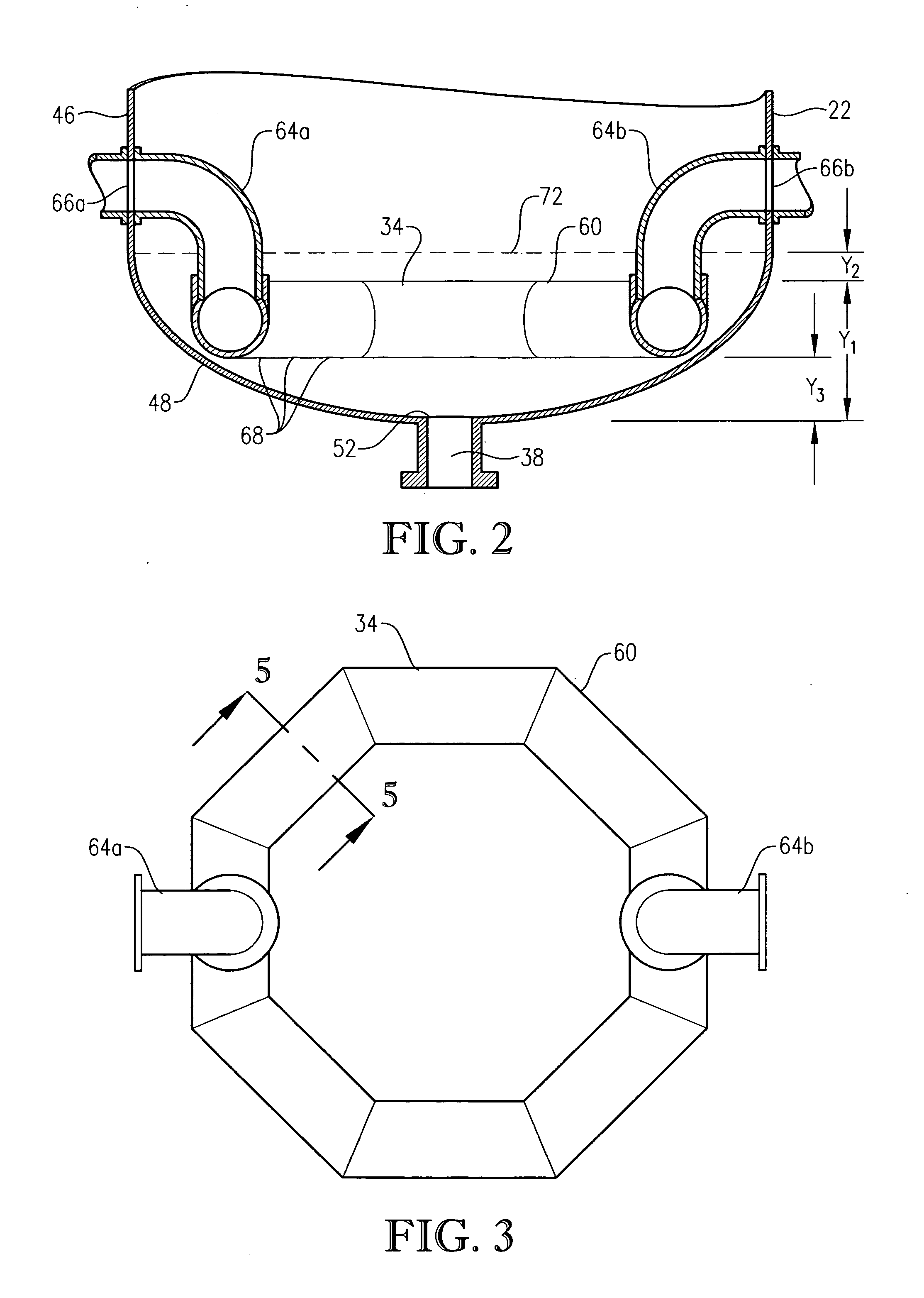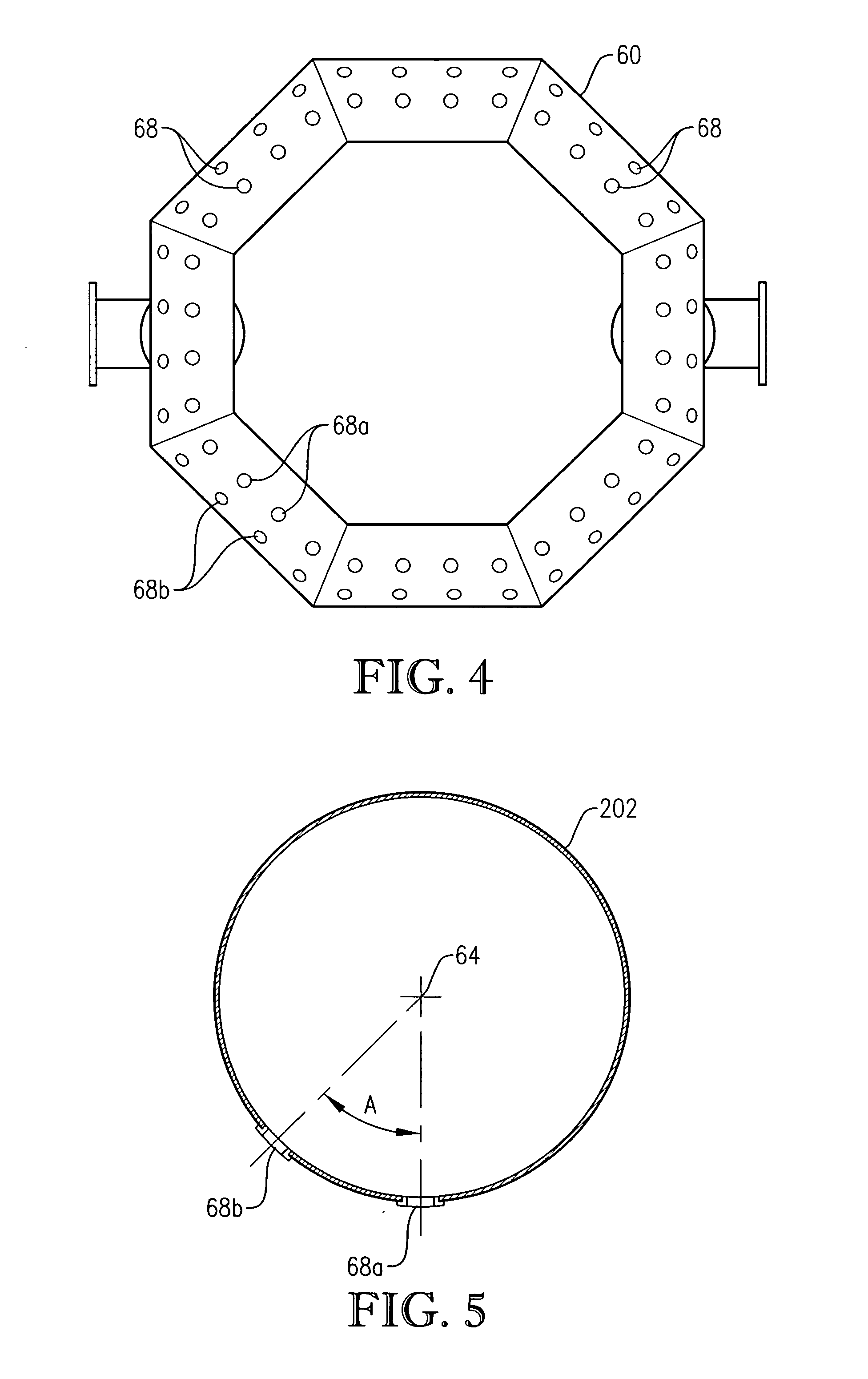Polycarboxylic acid production system employing oxidative digestion with reduced or eliminated upstream liquor exchange
a polycarboxylic acid and production system technology, applied in the field of polycarboxylic acid production system, can solve the problems of high cost, difficult to continuously remove the hot, flammable, corrosive mother liquor from the crude slurry, and the inability to adequately purify cta without hydrogenation, etc., to achieve the effect of improving purity
- Summary
- Abstract
- Description
- Claims
- Application Information
AI Technical Summary
Benefits of technology
Problems solved by technology
Method used
Image
Examples
Embodiment Construction
[0047] In accordance with one embodiment of the present invention, an improved primary oxidation system is provided. This improved primary oxidation system produces a purer initial slurry than conventional primary oxidation systems. The purer initial slurry produced by the improved primary oxidation system can be subsequently processed using novel techniques that are the subjected matter of certain embodiments of the present invention.
[0048] As used herein, the term “primary oxidation” denotes oxidation of an aromatic compound in at least one primary oxidation reactor / zone to produce a polycarboxylic acid, where at least 80 percent of the mass of the aromatic compound introduced into the primary oxidation reactor / zone is oxidized to the polycarboxylic acid in the primary oxidation reactor / zone. Although the primary oxidation reactor / zone can be formed by a plurality of vessels, conduits, and / or stages in a vessel, in a preferred embodiment of the present invention, primary oxidatio...
PUM
| Property | Measurement | Unit |
|---|---|---|
| weight percent | aaaaa | aaaaa |
| weight percent | aaaaa | aaaaa |
| temperature | aaaaa | aaaaa |
Abstract
Description
Claims
Application Information
 Login to View More
Login to View More - R&D
- Intellectual Property
- Life Sciences
- Materials
- Tech Scout
- Unparalleled Data Quality
- Higher Quality Content
- 60% Fewer Hallucinations
Browse by: Latest US Patents, China's latest patents, Technical Efficacy Thesaurus, Application Domain, Technology Topic, Popular Technical Reports.
© 2025 PatSnap. All rights reserved.Legal|Privacy policy|Modern Slavery Act Transparency Statement|Sitemap|About US| Contact US: help@patsnap.com



